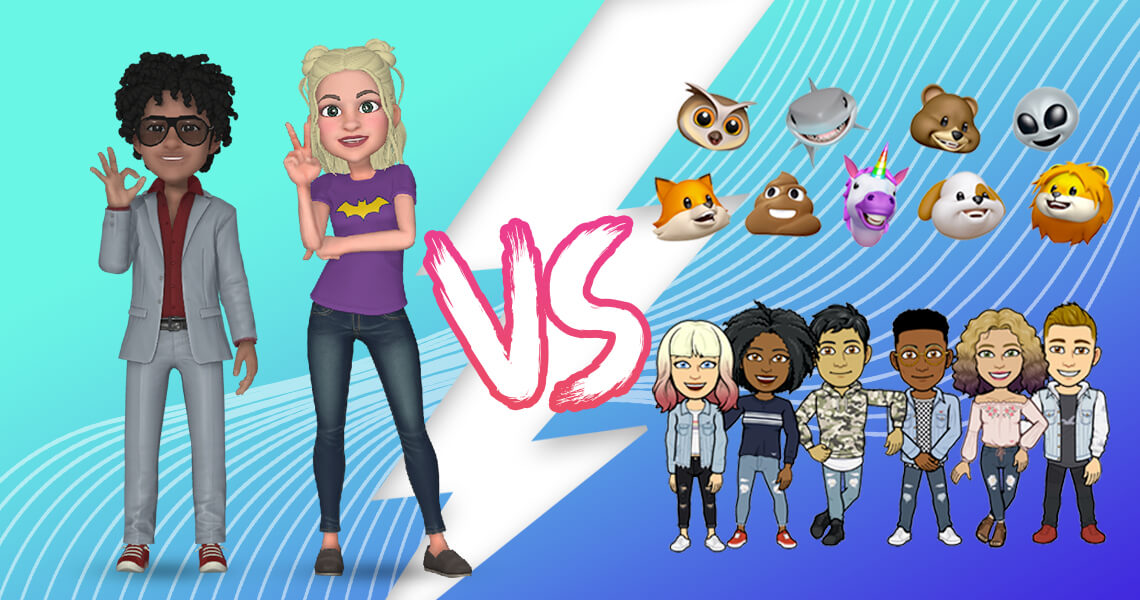Amazingly, 5 billion people across the globe send and receive SMS messages. Texting is quick, convenient, and ideal for today’s fast-paced world, so it’s easy to see why smartphone users send and receive 5 times as many texts as phone calls.
Still, texting has its limitations. It can be difficult to convey emotion over text messages, and though emojis have greatly helped bridge this gap, some things still get lost in translation. This is where new, more advanced types of emojis come in: AR Emojis, Animojis, and the like.
But what are the pros and cons of AR emoji vs Animoji or Memoji? Is there a difference between AR emoji vs bitmoji? And how do these next-generation emojis differ?
What Are Animojis?
Animojis are the original form of animated emoji, released by Apple in 2017. These animated emojis are controlled by a smartphone user’s facial movements, offering a fun and life-like way to send voice messages to friends and family. Animojis do not look like the smartphone user—instead, the user chooses a popular emoji (like a robot or smiling poop) to represent them in the animated voice messages.
What Are AR Emojis?
Augmented reality emojis, also known as AR Emojis, are Samsung’s advanced version of Animoji. Released in 2018, AR Emojis offer a greater form of self-expression by allowing the smartphone user to create their own look-alike emoji. AR Emojis are a full-body caricature that can be customized down to the glasses, clothing accessories, and hairstyle.
What Are Memojis?
A year after the release of Animojis, Apple released Memojis—an expanded version of the same concept. Unlike Animojis, Memojis can be designed to look like the smartphone user. However, while AR emojis are full-body, Memojis are limited to just the face.
What Are Bitmojis?
Bitmojis are the final player in the world of augmented reality emojis. Made by the company Bitstrips, Bitmojis are personal avatars that can be integrated across several platforms, including Facebook and Facebook Messenger, Gmail, Snapchat, and more. Users can build their own Bitmoji by downloading the Bitmoji app to their smartphone.
Comparing Emojis
Now that you know more about the various animated emojis on the market today, you may still have questions about AR emoji vs Bitmoji or AR emoji vs Memoji. Ultimately, each type of emoji allows smartphone users a greater opportunity for self-expression. Multiple platforms and brands are now becoming virtually connected through the use of emojis, and there are sure to be more exciting developments in the future.
As emojis become more advanced, they offer new ways to communicate and convey emotion via text message. But if you’re looking for the most life-like, customizable emoji option, AR Emojis are your best bet.
Build Your AR Emoji Today
Tafi has partnered with Samsung to enhance the personalization of AR Emojis, making them even more exciting and accessible to smartphone users across the world. Choose from an extensive collection of clothing and accessories to make your AR Emoji reflect your personal style. Learn more about Tafi’s avatar system today.
Go ahead and shop for Samsung AR Emoji gear in the Tafi store.



